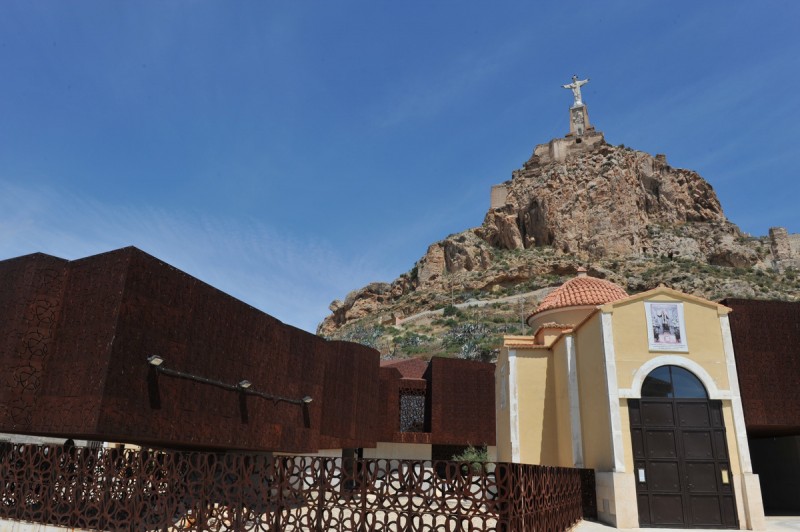

- EDITIONS:
 Spanish News Today
Spanish News Today
 Murcia Today
Murcia Today
 Alicante Today
Alicante Today
Monteagudo visitors centre and archaeological museum
Monteagudo has been home to numerous civilizations over the last 4,000 years
The San Cayetano Visitors Centre in Monteagudo is located below one of the most instantly recognizable monuments in the Region of Murcia, the 14-metre-high statue of Christ which towers over the “huerta” farmland from its plinth on top of the mountain behind the town of Monteagudo, but most of the exhibits are devoted not to this 20th century monument but to the archaeological treasure trove which lies beneath it.
The first statue of Christ was designed by Anastasio Martínez Hernández and was installed in Monteagudo in 1926, but was destroyed by Anarchists just ten years later at the start of the Civil War. By this time, though, it had already cemented itself into the scenery in the minds of the population of Murcia, and a replacement designed by Nicolás Martínez, the son of the original sculptor, was erected in 1951.
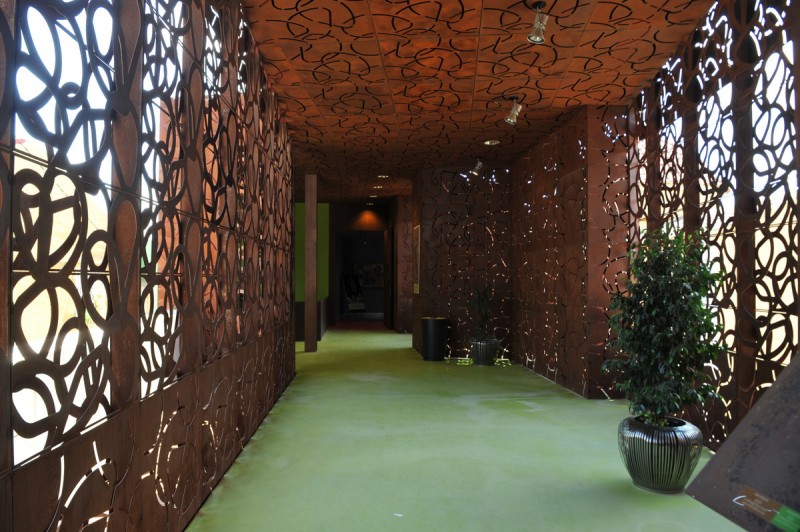
However, from a historical point of view the real importance of Monteagudo has been concealed by the emblematic Rio-de-Janeiro-style figure of Christ. It seems amazing today, but the statue is actually placed right on top of the 12th-century castle which was built by the Moorish ruler Ibn Mardanis, better known as “El Rey Lobo” (the Wolf King), who governed in Murcia, Valencia and Almería from 1147 until 1172. This was one of a series of palatial and military buildings in and around Monteagudo, another being the “Castillejo” palace, remains of which can be seen on a nearby hill, and some have speculated that the ruined castle of Larache may also the have been the work of the Wolf King.
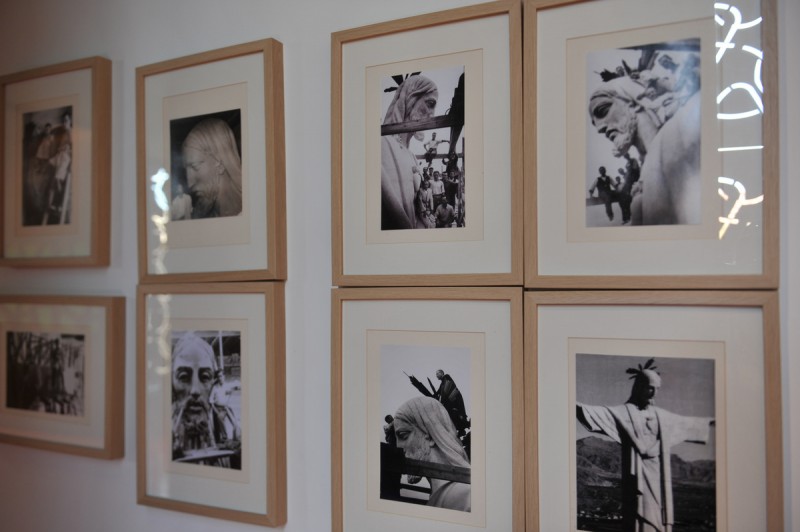
But the Moorish remains are not the only ones of historical interest to be found in the area where the Monteagudo Visitors Centre stands, next to the old chapel dedicated to San Cayetano: beneath the ground extensive findings have been made showing that previous inhabitants included the Romans 2,000 years ago, the Iberians 500 years before them, members of the Argaric culture 3,800 years ago and even Copper Age (or Chalcolithic) Man in the third millennium BC.
Many people might be tempted to visit Monteagudo in order to climb up to the statue and admire the views, but it must be stressed that this is not advisable: the climb to the top has been fenced off as it is extremely perilous, and is definitely not part of the guided tour at the Visitors Centre.
What is on offer, though, is a very well-presented sample of the items unearthed here, descriptions of the cultures they belonged to and recreations of what life must have been like for those who lived in Monteagudo at different stages of its 5,000-year human history.
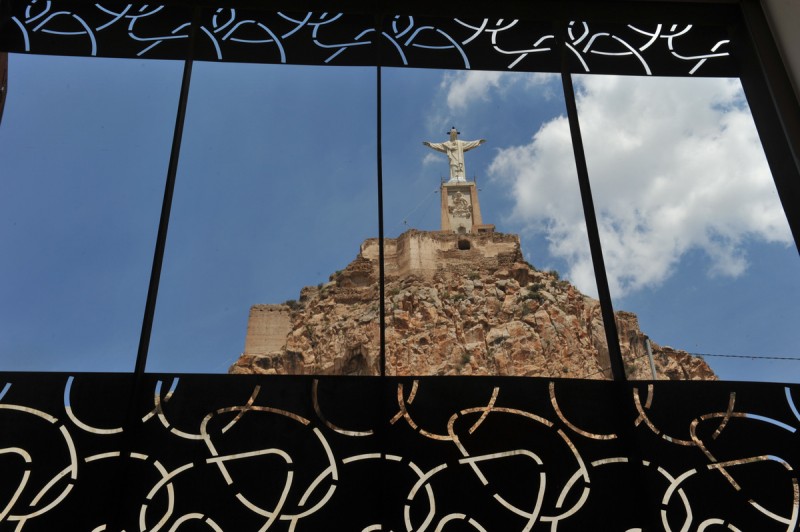
The exhibits at the Monteagudo visitors centre
The route around the visitors centre begins outside, next to the small church of San Cayetano after which it is named. A Roman street is known to have existed on this part of the hill and the remains of an important public building built in the 1st century AD were discovered in the 17th century: two red marble columns from this building were re-used in the church of San Andrés, in the centre of Murcia.
Also in the courtyard at the front of the visitors’ centre are the excavated remains of two huts belonging to the Argaric culture. The first of these occupies a floor area of around 50 square metres and contains some of the eleven burial kists which were found under the floor of its two rooms, as well as an oven, while the second has only been partially investigated as part of it lies outside the land on which the visitors centre stands.

Moving inside, the first room of the exhibition illustrates aspects of life in Monteagudo during the Copper Age, around 4,000 years ago, when early man was already engaging in agriculture including the cultivation of cereals, as well as cattle farming. Tools found here show that the inhabitants were active in logging and working with timber – there were still wide swathes of forest in southern Spain at the time – and weapons such as bows and arrows and a javelin.
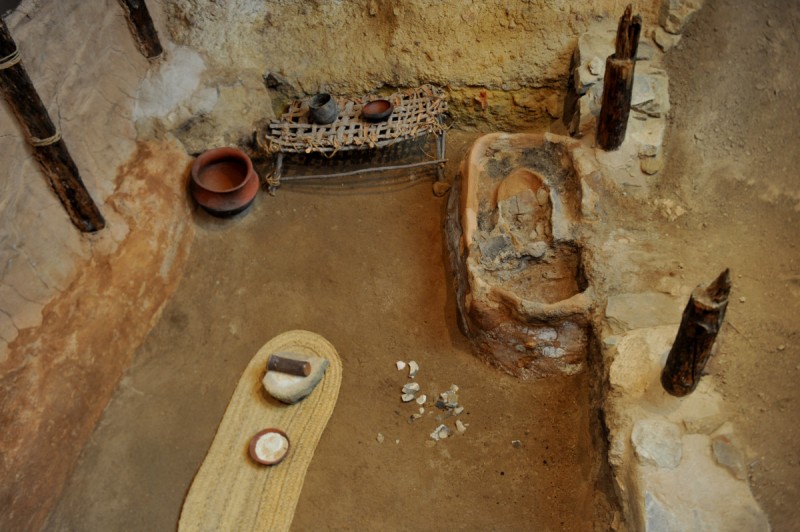
The second room jumps forward to the period of the Argaric occupation of Monteagudo, which lasted around seven centuries. The main exhibit here is the restored remains of an Argaric dwelling like the ones whose remains are in the courtyard, in this case a home which was destroyed by fire. Nonetheless it has been possible to piece together a remarkable amount of detail about life in the hut, some of it from the ashes which were found here, and a primitive oven has been restored as faithfully as possible. Loom weights indicate textile activity, and other tools include a metal awl, bone needles and scrapers and stone hammers, although elsewhere the presence of sickles and hand mills indicate the importance of agriculture to the Argarics. Similarly, the grave goods found in burial pits and kists reflect the highly organized caste system of Argaric society.
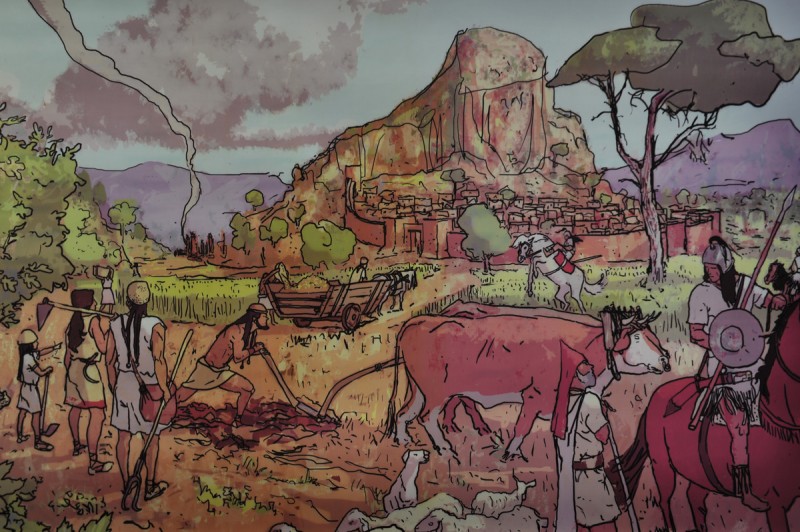
Next in the history of Monteagudo, and in the exhibition, come the Iberians, who followed the Argarics approximately 500 years before the birth of Christ. They were heavily influenced by trading cultures such as the Greeks, the Phoenicians and the Carthaginians, and as well as agriculture they were active in mining (especially for silver) and commerce. Among the objects found in Monteagudo are battle weapons including swords and slings, and the ceramic pottery shows how techniques had evolved in the centuries since the disappearance of the Argarics.
The fourth display room is dedicated to the presence of the Romans, who brought roads and the “Mediterranean trilogy” of wine, bread and olive oil to Murcia as they exploited the minerals of the Sierras. At Monteagudo a small forum has been found, as have the remains of workshops and commercial buildings, along with items such as stamps to “brand” the bread, rotary mills and a “tintinabulum”, which was a decorative item which sounded when the breeze blew through it.
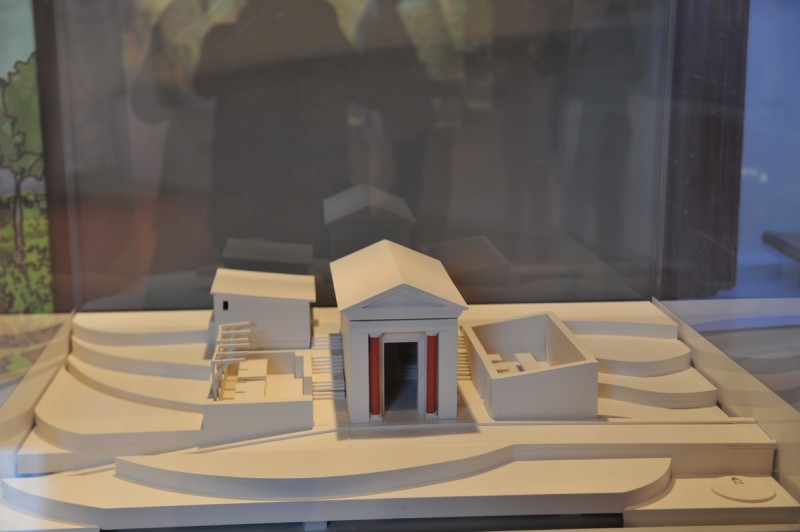
The next display is concerned with the Golden Age of Monteagudo under the rule of Ibn Mardanis, the Wolf King, who built the fortress which can be seen through the window of this room. The complex of lavish palatial rooms in El Castillejo includes typical Islamic geometrical decorations and an alabaster column, and various images showing how the palace might have looked a thousand years ago. There are also gold coins, ceramics, lanterns and other household objects including a portable stove.
Finally, the centre contains a photographic display concerning the history of the statue of Christ which was erected on top of the fortress of Qasr Ibn Sa’d in the 20th century, and which has become one of the most iconic sights in Murcia, as well as a display showing how the various exhibition spaces appeal to the five senses.
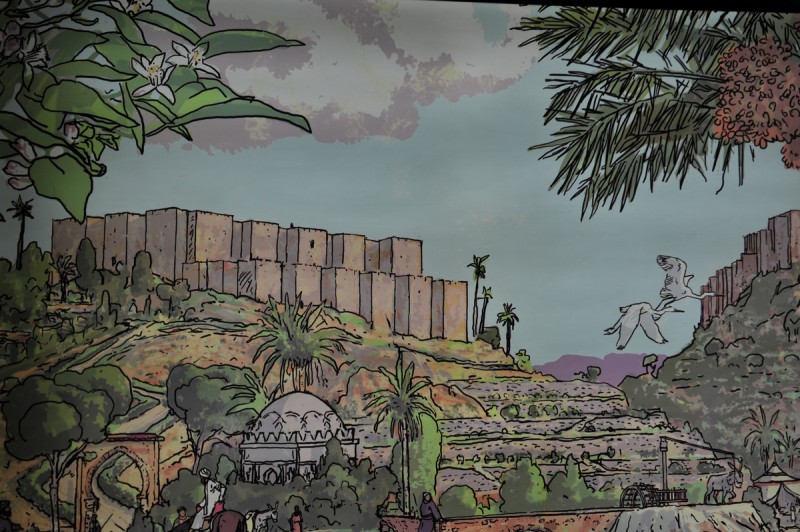
A guided tour normally lasts around 50 minutes, although visitors are also free to make their own way round, and the information panels are all translated into English for the benefit of non-Spanish visitors.
There is also a regular guided tour covering a route of three kilometres starting at Monteagudo, including the main fortresses of the Moors in the area as well as irrigation systems and farms which date from the reign of the Wolf King.
Contact details
Telephone: 968 851910
Address: Calle Iglesia, 48, 30160 Monteagudo, Murcia (see map below)
For those using public transport the centre can be reached by taking the number 36 bus from the centre of Murcia: this service leaves from the main bus station and stops at Plaza Juan XXIII, and on Ronda de Levante, Primo de Rivera and Calle Isaac Albéniz before heading out of Murcia along the Carretera de Alicante. There are 21 services per day between 7.20 and 21.20.
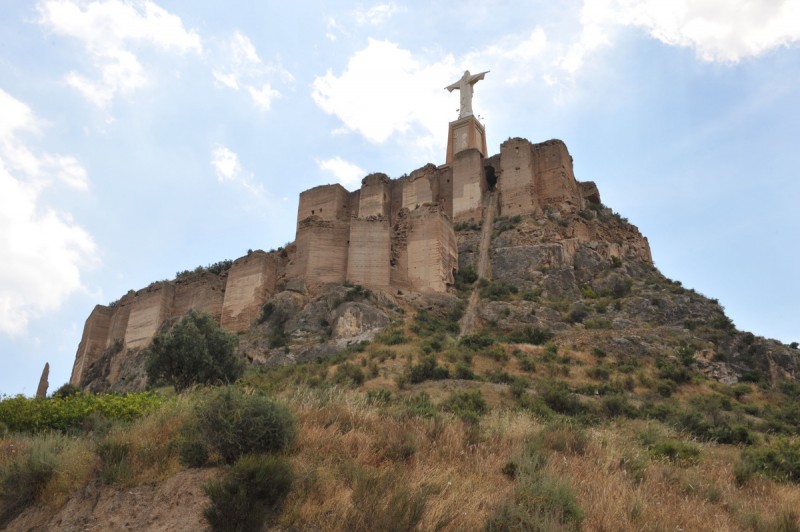
Opening hours
Tuesday to Saturday 9.30 to 14.00 and 17.00 to 19.30
Sunday: 10.00 to 14.00.
Closed on Mondays.
For more information regarding news, what's on and visiting the regional capital go to the city of Murcia section of Murcia Today.

